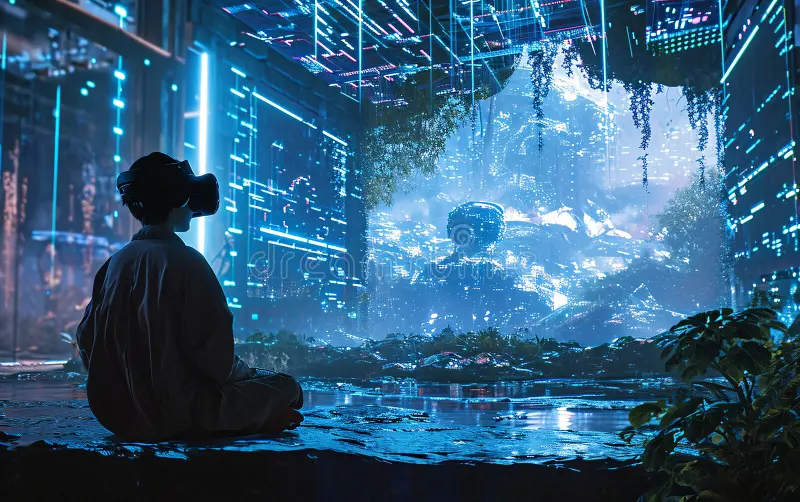
Absolutely! Here’s a full, article-style write-up for:
🧙♂️⚖️ Balancing Fantasy and Reality: Designing Believable Game Worlds
Creating a game world that captures the magic of fantasy while remaining grounded enough to feel real is one of the great balancing acts in game design. Whether your world is filled with dragons, cybernetic monks, or floating cities in the sky, players still need to believe in it. That belief doesn’t come from realism—it comes from internal consistency, emotional truth, and immersive logic.
Let’s break down how you can blend the impossible and the authentic to design game worlds that feel both wildly imaginative and deeply believable.
🌍 Why Believability Matters (Even in Unreal Worlds)
Players will suspend their disbelief—but only if the world earns it.
Believable game worlds:
- Make fantasy feel lived-in, not just decorative
- Help players emotionally invest in characters and conflicts
- Reduce friction between storytelling and gameplay
- Encourage deeper immersion and exploration
Whether you’re designing a neon-lit dystopia or a medieval realm of magic, your world needs to feel like it could function—even if it’s nothing like our own.
🧠 Core Pillars of a Believable Fantasy World
1. Internal Logic Over Real-World Accuracy
You don’t have to obey our laws of physics—but you must obey your world’s.
- Do magic systems have limits or costs?
- What keeps a floating city aloft? Is it tech? Magic? Religion?
- If time travel exists, how does society regulate or fear it?
📌 Tip: Ask “Why?” and “How?” at every step of your worldbuilding. If a player asked, “Why does this work?”, your game should have an answer—even if it’s not immediately given.
2. Cohesive Cultures and Societies
Fantasy races or futuristic factions need more than cool aesthetics—they need culture, conflict, and history.
- What do people eat? What holidays do they celebrate?
- What are their myths, taboos, technologies?
- How do they view outsiders or magic or death?
Games like The Witcher and Mass Effect excel here—every group has traditions, social hierarchies, and conflicting values.
📌 Tip: Borrow inspiration from real-world anthropology, history, and politics to ground your fictional cultures.
3. Visual and Auditory Consistency
The look and sound of your world should reflect its logic and mood.
- A high-tech world may favor clean lines and synth-heavy music.
- A crumbling magical kingdom might use ruined stone textures and haunting choral soundscapes.
- NPC voices, ambient noise, and UI sounds reinforce immersion.
📌 Tip: Align art, music, and sound design with your world’s tone and technological/magical level.
4. Grounded Character Motivations
Even in fantastical settings, emotions are universal.
- A space pirate wants freedom.
- A cursed knight seeks redemption.
- A villain wants revenge, justice, or maybe peace.
What grounds characters isn’t their setting—it’s their emotions. Build character arcs that players recognize and relate to, no matter the genre.
📌 Tip: Anchor every major plotline or conflict in a core human (or human-like) emotion.
5. Everyday Details Make Worlds Feel Lived-In
Fantasy often goes big—epic wars, ancient gods, end-of-the-world stakes. But small details sell believability.
- Laundry drying on a rooftop
- NPCs arguing about taxes or sports
- Posters for in-world events or brands
- Weathered signs, worn furniture, rusting metal
Games like Red Dead Redemption 2 and Cyberpunk 2077 use everyday clutter to make their worlds feel real.
📌 Tip: Include mundane elements to balance the grand. It makes the grand feel even grander.
🎮 Games That Master the Balance
| Game | Fantasy Element | Realism Grounding |
|---|---|---|
| The Witcher 3 | Monster hunting, curses, elves | Political systems, peasant life, real-world accents |
| Skyrim | Magic, dragons, Daedric realms | Cold climates, medieval cities, resource economies |
| Horizon: Zero Dawn | Post-apocalyptic robot beasts | Human tribalism, technology-worship, survival tactics |
| Bioshock | Underwater dystopia with powers | 1960s culture, propaganda, ethical dilemmas |
| Disco Elysium | Surreal metaphysics, thought-forms | Gritty realism, depression, political ideologies |
🛠️ Design Tips for Balancing Fantasy and Reality
✅ Create rules for the impossible
Magic isn’t free. Advanced tech breaks down. Build systems that add stakes.
✅ Use familiar emotional touchstones
Love, fear, ambition—ground your story in universal themes.
✅ Show consequences
If someone breaks a law, they’re arrested. If a monster attacks a town, people react.
✅ Let the mundane exist
Fantasy isn’t all war and prophecy. Let characters gossip, eat, rest, joke, and grieve.
✅ Reflect the world in every detail
From architecture to clothing, every visual element should say something about the world’s story and structure.
💡 Quick Inspiration Prompts
- What does a wedding look like in your world?
- Who’s the “average citizen”? What’s their life like?
- What do people believe about the world vs. what’s true?
- What’s your world’s biggest fear or legend?
- How would a child describe their city?
The answers help ground your fantasy in relatable, immersive context.
🧙♀️✨ Final Thought
A believable game world doesn’t mean “realistic”—it means emotionally and logically convincing. Fantasy gives us the freedom to imagine. Reality gives us the tools to make those imaginations feel true.
When you balance the two, you don’t just build a world—you build a place players want to live in, fight for, and remember long after they’ve logged out.
Need help shaping your fantasy world, designing believable NPCs, or building rules for magic and society? I’ve got your back—let’s bring your world to life, one grounded dream at a time. 🌍🛠️